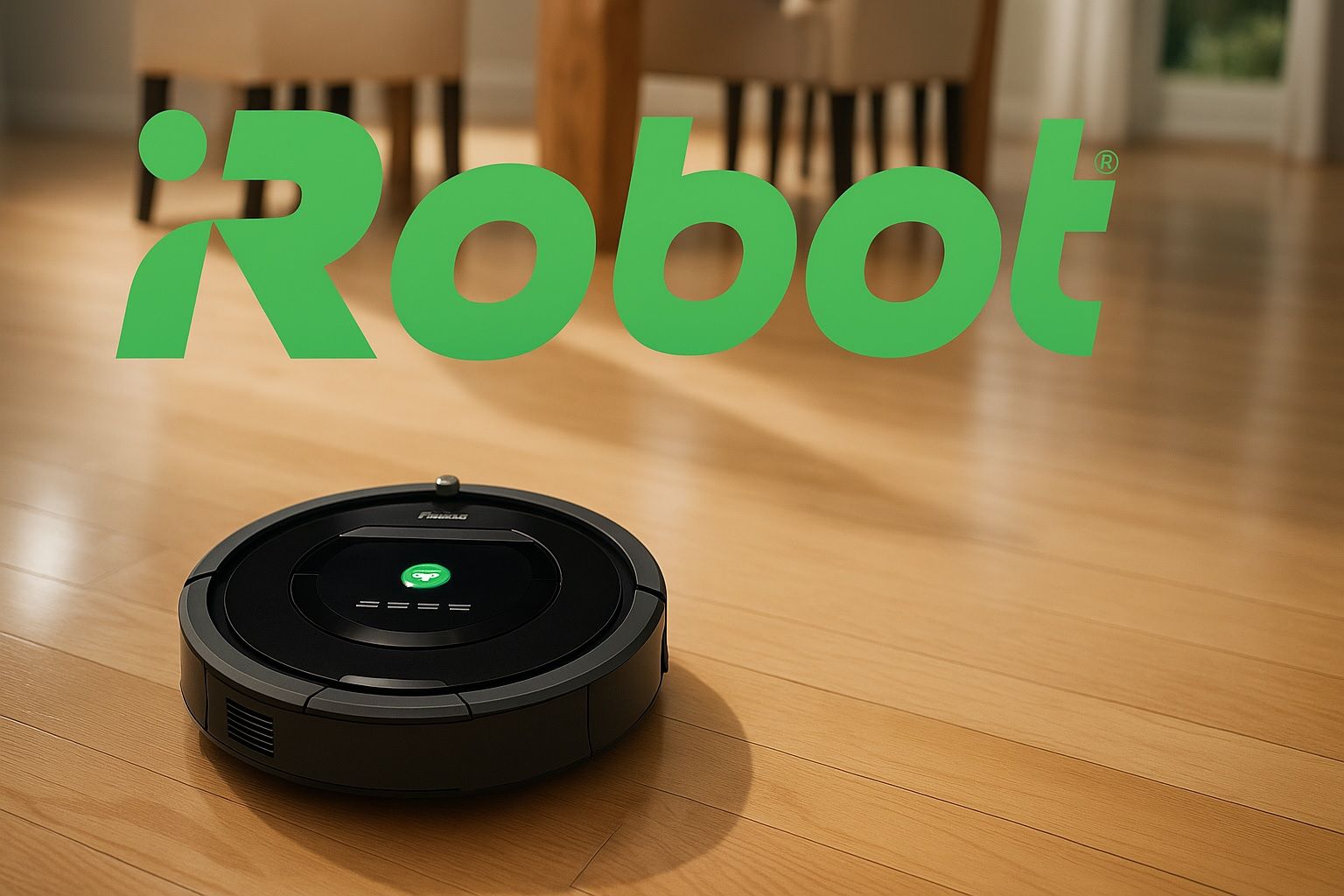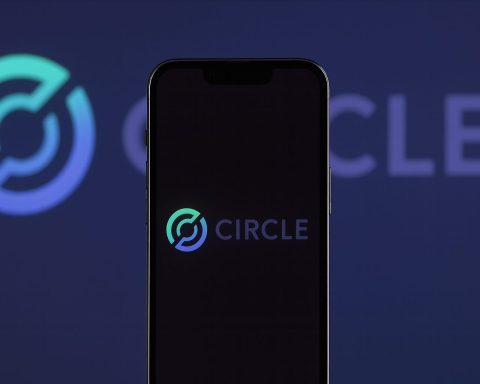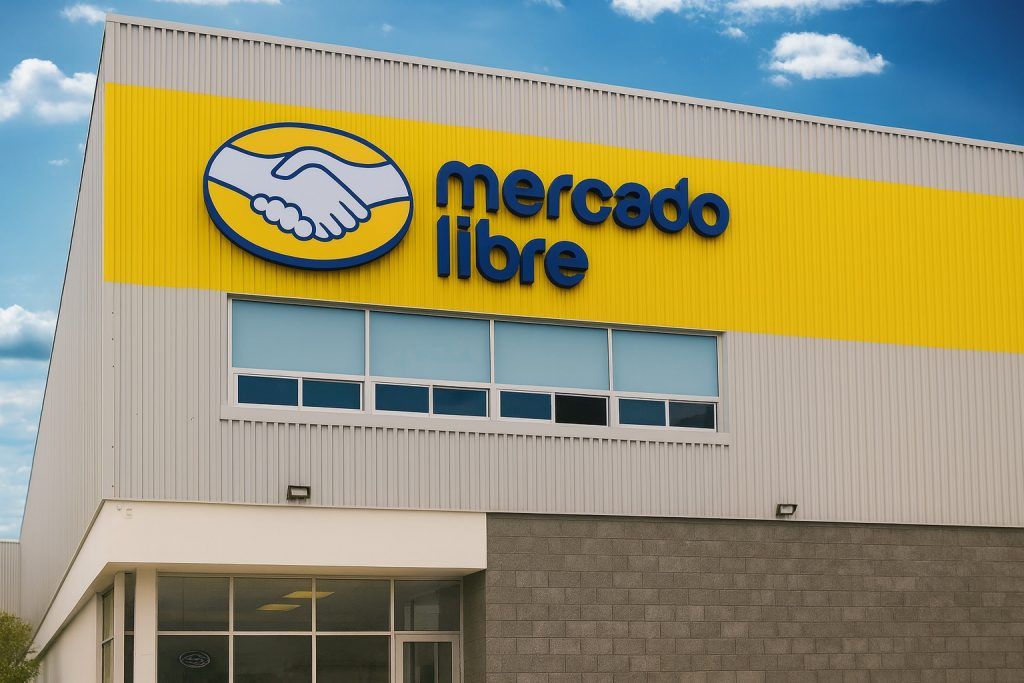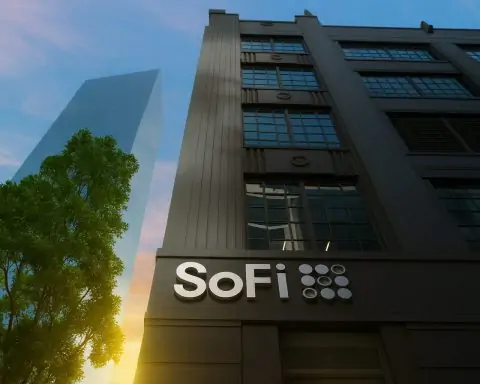- Surging Price: iRobot (NASDAQ: IRBT) shares spiked ~36% on Oct. 15, closing around $5.37 after an intraday high of $6.09 – the stock’s highest level in seven months [1]. This short-term surge came on heavy trading (7+ million shares vs ~2.2M average) and options volume (call contracts up 404% above normal) [2] [3]. IRBT’s 52-week trading range is $1.76 – $13.06, reflecting extreme volatility [4].
- Short-Squeeze Rally: The price jump had no major news catalyst, pointing to a classic short squeeze. Roughly 26–28% of iRobot’s float was sold short – among the highest short interest on the market [5] [6]. As the stock rose, bearish traders rushed to cover, accelerating the gains. Retail trader frenzy also kicked in: message volume on Stocktwits exploded 3,633% and sentiment flipped to “extremely bullish” during the rally [7].
- Exec’s Optimism Boosts Sentiment: iRobot’s marketing chief Athena Kasvikis struck an upbeat tone in a podcast this week, calling the company in a “really interesting growth phase right now” with new AI-powered Roomba products and a fresh TV ad campaign [8]. These growth hints fueled investor optimism. However, CEO Gary Cohen tempered expectations, admitting recent results “fell short” due to “persistent market headwinds and delays” in scaling new products [9].
- Turnaround vs. Challenges: The Roomba maker remains unprofitable. In Q2 2025, revenue fell to $127.6M (down ~23% YoY) though slightly beating forecasts, and net losses narrowed to -$0.27 per share (better than expected) [10]. Cash is dwindling – just $40.6M on hand by mid-year [11] – and earlier this year iRobot warned of “substantial doubt” about its ability to continue as a going concern amid falling sales and heavy losses [12] [13]. The company has slashed costs (cutting 30% of staff) and launched new products to revive growth [14] [15].
- Amazon Deal & Future Outlook: iRobot’s board is reviewing “strategic alternatives” – including a potential sale or merger – after regulators blocked Amazon’s $1.7 billion takeover bid in 2024 on antitrust grounds [16] [17]. With that deal off, iRobot is operating independently and trying to refinance debt [18] [19]. Analysts remain cautious: IRBT has no Buy ratings (1 Hold, 1 Sell) and a consensus “Reduce” rating [20]. Yet the average 1-year price target is ~$12, suggesting upside if the company can execute a turnaround [21]. An earnings report in early November and any updates on a possible buyout or partnership are the next big catalysts on the horizon.
IRBT Stock Soars on Short-Squeeze Rally
iRobot’s stock price skyrocketed this week in one of its sharpest moves on record. On Wednesday (Oct. 15), IRBT jumped from $3.93 to about $5.37 at the close, a +36% gain in one day [22]. Intra-day, the Roomba maker’s stock hit $6.09 (a level last seen in March) before paring back [23]. By comparison, major indexes were flat to mildly positive that day [24] – making iRobot a dramatic outlier. The sudden spike pushed IRBT well above its recent trading range (the stock had languished under $4 for weeks) and lifted shares to a seven-month high [25].
Trading activity was frenzied. Volume surged to over 7 million shares, nearly 3× the daily average, as traders piled in [26]. Options markets also saw unusual action: nearly 19,700 call options were bought on IRBT Wednesday, a 404% increase over typical volumes [27]. Heavy call-buying often signals speculative bets on further upside. The 52-week range for IRBT now stands at $1.76 (low) to $13.06 (high) [28], underscoring how far the stock has swung. Even after this rally, shares remain down ~31% year-to-date [29] and have lost over 90% of their value since peaking near all-time highs in 2021 [30] – a reminder of the company’s longer-term downturn.
Short Interest Triggers a Frenzy
Market observers attribute iRobot’s explosive jump largely to a short squeeze and speculative fervor, rather than fundamental news. Prior to the spike, iRobot was one of the most heavily shorted stocks on the market. An estimated 26–28% of IRBT’s float (public shares) is sold short [31] [32], meaning many investors were betting on the stock falling. When the share price began climbing rapidly, those short-sellers were forced to buy shares to cover their positions, driving the price even higher in a feedback loop.
At the same time, retail trader enthusiasm kicked into overdrive. On social media forums, iRobot became a trending “meme stock” for the day. Stocktwits data showed message volume on the IRBT ticker jumping 3,633% in 24 hours, with sentiment swinging from neutral to “extremely bullish” (96/100) [33]. Some traders hyped the rally with speculation of secret good news. “$IRBT shorts covering on such large squeeze means they know something big is coming, maybe a buyout or new product,” one user guessed, as the stock surged [34]. In reality, no major deal or product announcement had emerged – the buying was largely technical and sentiment-driven, according to market analysts [35].
The absence of concrete news didn’t stop after-hours gains either – IRBT extended its climb slightly in post-market trading Wednesday [36]. The scenario mirrors past meme-stock style squeezes, where a high short interest combined with coordinated retail buying can produce outsized moves. It’s a stark reversal for a stock that, until this week, had been trading quietly in a narrow range amid little fanfare [37].
“Growth Phase” Buzz from iRobot’s CMO
One factor that added fuel to the fire was optimistic commentary from iRobot’s own management. Earlier in the week, Athena Kasvikis – iRobot’s Chief Marketing Officer – publicly touted an upbeat outlook for the company. In an Ad Age podcast interview (released Wednesday), Kasvikis described iRobot as being in a “really interesting growth phase right now, both from a product perspective but also from a marketing perspective” [38]. She highlighted the company’s latest Roomba models with AI-powered cameras and smarter navigation, which aim to make the robots more capable. Kasvikis also detailed a new marketing blitz: in June, iRobot launched its first major ad campaign since 2023, including TV spots on streaming platforms like Hulu, Amazon Prime Video, and Peacock, with the tagline “Roomba. Made for This.” [39]. This campaign – combined with strong visibility during Amazon’s Prime Day sale (Roomba vacuums were the #1, #2 and #3 best-selling robot cleaners on Prime Day) – is part of an effort to revive consumer interest [40] [41].
Kasvikis’ bullish remarks and focus on innovation appear to have resonated with investors, feeding the narrative that iRobot might be turning a corner. The CMO’s comments circulated on financial news sites and social media, helping turbocharge the optimistic sentiment around IRBT stock. It’s unusual for a marketing executive’s statements to move a stock, but given iRobot’s lack of recent big product reveals or guidance, even this hint of positive momentum was seized upon.
Still, it’s important to note that company insiders’ optimism contrasts with hard financial realities. In the same breath that Kasvikis was talking up growth, iRobot’s CEO struck a more cautious tone about current performance. Gary Cohen, who became CEO after the Amazon deal fell through, has been frank about the challenges. “Our second quarter performance fell short of our expectations, due to persistent market headwinds and delays in scaling production and sales of our new products,” Cohen said in August [42]. He lauded progress on cutting costs and improving margins, but warned that iRobot’s cash position continued to decline as it funds new product launches – posing “ongoing challenges to liquidity and operational flexibility” [43]. In other words, new AI-driven Roombas and marketing hype are not yet translating into profits.
Financial Struggles Temper the Narrative
Behind the stock’s wild swings lies a company still fighting to stabilize its business. iRobot’s latest financial results underscore both the potential and peril it faces. In Q2 2025, reported in August, the company did show some signs of improvement: revenue came in at $127.6 million, which beat analyst expectations (~$125M), and the adjusted net loss of $0.27 per share was far better than the –$0.91 per share consensus forecast [44]. These beats suggest iRobot’s cost-cutting and product refresh are yielding modest benefits. The company’s gross margin improved to ~30% (from an abnormally low 16.7% a year prior, which had been hurt by a big inventory write-off) [45] [46]. Operating expenses have been trimmed as well, contributing to a smaller operating loss.
However, the overall picture remains challenging. Q2 revenue was still down about 23% year-over-year [47] [48], reflecting weaker demand especially in North America. Sales in iRobot’s core U.S. market plunged 33% in Q2 from a year earlier, even as Japan grew 6% and Europe/Middle East/Africa fell 17% [49]. The company continues to bleed cash: it ended Q2 with only $40.6 million in cash (plus ~$36M in restricted cash for debt service) [50] [51], down from nearly $70M just a quarter prior. Net losses, while reduced, are still substantial – iRobot lost about $0.68 per share (GAAP) in Q2 and is on track for a full-year loss in the dollars per share [52] [53]. In fact, equity analysts project –$5.74 EPS for the current fiscal year if trends continue [54].
Crucially, iRobot’s survival is not assured. In March, the company issued a grave warning in its annual report, stating there is “substantial doubt about the Company’s ability to continue as a going concern” over the next 12 months [55]. This kind of language – essentially questioning whether iRobot can stay in business – is a five-alarm fire for any company. The stark warning came as Q4 2024 sales had plunged 44% year-over-year (to $172M) and losses widened, prompting a massive selloff in IRBT shares [56] [57]. Management responded by scrapping all forward guidance for 2025 and canceling earnings conference calls [58], choosing to focus on urgent restructuring.
Since then, iRobot has been in full turnaround mode. The company enacted a major cost-reduction plan dubbed “iRobot Elevate,” which included laying off about 350 employees (~31% of staff) and a shakeup of leadership [59] [60]. Longtime CEO (and co-founder) Colin Angle stepped down, with new CEO Gary Cohen brought in for his turnaround experience [61]. R&D and marketing have refocused on a narrower set of products: notably, iRobot launched a flagship combo vacuum-mop model (the Roomba Max 705 Combo with an AutoWash dock) this July, aiming to attract high-end buyers with advanced features like 175x suction power and AI obstacle avoidance [62] [63]. The company also worked to whittle down excess inventory (down 13% YoY) and emphasized higher-margin premium models (though mid-to-premium robots still made up ~73% of sales, slightly down from 76% a year ago) [64] [65].
These efforts are part of what Cohen calls a “strategic pivot” to stabilize iRobot. “Although early consumer response to our latest product launches has been encouraging, broader market pressures and financial constraints remain significant hurdles to improved performance,” the CEO cautioned in Q2 [66]. In plain English, demand for pricey home robots is still under pressure – consumers have tightened spending post-pandemic, cheaper rivals abound, and even macro factors like inflation and tariffs on Chinese-made goods loom in the background [67]. iRobot itself acknowledged that new product launches face uncertainty due to consumer demand, competition, macro conditions, and tariff policies [68]. The competitive landscape is indeed fierce: SharkNinja (NYSE: SN), maker of Shark vacuums and a newer entrant to robotics, has been gaining market share and saw its stock jump ~110% in the past year on strong earnings [69]. Meanwhile, Chinese brands like Ecovacs and Roborock aggressively compete in the global robot vacuum market (though they’re not U.S.-listed) [70]. This puts added pressure on iRobot’s pricing and innovation as it fights to hold onto its Roomba franchise leadership.
Strategic Alternatives and Amazon’s Shadow
Given these headwinds, iRobot’s board and advisors have been actively exploring strategic alternatives to maximize shareholder value – or simply to keep the company afloat. In early 2025, alongside its going-concern warning, iRobot announced a formal review of strategic options, including a potential sale, merger, or refinancing of the company [71]. This process is ongoing and open-ended: management has set no firm timeline and cautions that it may not result in any transaction [72]. The company also negotiated waivers with its lenders to avoid breaching debt covenants while the review is underway [73]. Essentially, all options are on the table – from finding a white-knight buyer or partner, to raising fresh capital, to further belt-tightening or asset sales – as iRobot attempts to navigate out of distress.
The strategic review was triggered in large part by the collapse of iRobot’s planned acquisition by Amazon.com. In August 2022, Amazon (already an investor in smart home gadgets like Alexa and Ring) agreed to buy iRobot for $1.7 billion (about $61 per share). That deal offered a lifeline to iRobot, but it stalled under regulatory scrutiny. Finally, in January 2024, Amazon and iRobot mutually abandoned the merger after U.S. and European antitrust regulators signaled they would block it [74] [75]. EU officials were concerned Amazon could use its e-commerce dominance to favor iRobot’s Roombas over competing brands or misuse consumer data from the vacuums [76]. The U.S. FTC was also preparing a lawsuit to stop the deal [77]. Facing no viable path to approval, Amazon walked away – but not without a parting cost. Under the merger agreement, Amazon paid iRobot a $94 million termination fee for the failed deal [78]. iRobot also immediately underwent painful changes: it implemented the 30% workforce reduction and leadership change noted above, essentially restructuring for stand-alone survival once the Amazon exit was certain [79].
For iRobot, the end of the Amazon deal was a major blow – not just losing a big buyout premium for shareholders, but losing the backing of one of the world’s richest companies to cover its debts and invest in new tech. IRBT stock tumbled on the news, falling 7% that day and by half over the month when it became clear the EU would nix the merger [80]. In the aftermath, iRobot has had to chart its own course. On the positive side, Roomba remains a top brand (as seen in Prime Day rankings [81]), and Amazon continues to retail iRobot products. The influx of the $94M breakup fee in 2024 also provided some short-term liquidity. But iRobot now competes in the smart home market without Amazon’s deep pockets, and it must service its debt (over $50M in term loans due soon) from its own cash flows. This context explains why investors keep a keen eye on any hint that iRobot might attract another suitor or partner. The short-squeeze frenzy itself included rumors of a possible buyout, showing that the market hasn’t given up on the idea that iRobot could still be acquired – if not by Amazon, perhaps by a private equity firm or another appliance company. For now, though, no acquisition offers have been announced, and iRobot’s fate rests on executing its turnaround or finding a creative financing solution.
Analyst Views and Future Outlook
On Wall Street, sentiment toward IRBT remains wary despite this week’s fireworks. Coverage is sparse – only two major analysts currently have ratings on iRobot – and none recommends buying the stock at present. According to MarketBeat data, iRobot carries a consensus rating of “Reduce,” with 1 Hold and 1 Sell rating on the shares [82]. (By contrast, before the Amazon deal was nixed, some analysts had Buys on IRBT, but those have fallen away as the company’s prospects dimmed.) Price targets vary widely, reflecting uncertainty. The average 12-month target is about $11.94 [83], which implies over 120% upside from current levels – but this figure is skewed by very few estimates, and likely assumes a successful turnaround or external rescue. In reality, analysts are focused more on downside risks. iRobot’s balance sheet and valuation metrics raise multiple red flags. The stock may look cheap at face value – trading around 0.3× revenue (price-to-sales), a fraction of typical tech sector multiples [84] – but that’s because investors fear the sales may not be sustainable. With no positive earnings to speak of (the P/E is negative), traditional valuation is tough. More telling is the Altman Z-score ~ –1.4, which places iRobot well into “distress” territory financially [85]. Its quick ratio (~0.34) and other liquidity measures are weak [86], indicating limited ability to weather further losses without new funding. High short interest (still ~26% even after shorts covered some positions) also signals that many sophisticated investors are betting on further decline or even bankruptcy.
Some independent market commentators have bluntly warned against chasing the stock’s rally. For example, a recent Seeking Alpha analysis argued that iRobot’s surge may be a temporary trading pop, as the company’s “worsening fundamentals and bankruptcy risk” outweigh the short-term technical drivers [87]. In other words, the core problems – shrinking revenue, negative cash flow, a saturated market – remain unresolved, and could ultimately pull the stock back down. Bulls, on the other hand, point to iRobot’s brand strength, intellectual property, and installed base of millions of Roombas as sources of value that could be unlocked if the company refocuses or finds a stable home. If iRobot can return to growth or secure a buyout, the stock might have major upside from these depressed levels (one need only look at that ~$12 price target and recall that Amazon valued iRobot at $61/share in 2022). But those are big “ifs” tied to execution and external factors.
Looking ahead, the next milestones for IRBT will be critical. The company is expected to report Q3 2025 earnings in early November, which will update investors on how sales fared over the late summer and back-to-school season. (Notably, iRobot has suspended its practice of giving forward guidance [88], so investors must glean what they can from the results and any management commentary.) With the holidays approaching, Q4 is typically iRobot’s strongest quarter, so any hints about demand trends or new product reception will be closely watched. Moreover, any news on the strategic review could drop at any time – positive or negative. A successful refinancing or minority investment could alleviate the going-concern fears, while failure to find a lifeline might increase bankruptcy risk. Regulatory and legal developments also linger: for instance, the FTC’s antitrust stance, and a pending class-action lawsuit alleging iRobot misled investors about the Amazon deal fallout [89], add additional backdrop uncertainty.
For now, iRobot’s stock remains a high-risk, high-volatility bet, as this week’s action showed. In the short term, trader-driven swings could continue – both up and down – especially with such a large short interest and active retail following. Longer-term, the stock’s fate will likely hinge on whether iRobot can pull off a turnaround or find a savior. As one analyst put it, “for long-term investors, the question is whether iRobot can translate its strategic initiatives into sustainable growth” – otherwise, the recent spike may prove to be a fleeting bubble rather than a true breakout [90].
Bottom Line:IRBT’s breathtaking 55% intraday rally has put the embattled Roomba maker back on the map, but the company’s fundamentals still have a lot to prove. Investors should brace for more twists and volatility ahead. The coming weeks – with earnings results and any strategic updates – will help determine if this robotic vacuum pioneer is truly cleaning up its act, or if its stock will tumble back to earth once the dust settles.
Sources: Financial filings and press releases [91] [92]; TechStock² analysis [93] [94] [95]; Reuters and Stocktwits news reports [96] [97]; Investopedia and Seeking Alpha insights [98] [99]; MarketBeat market data [100] [101].
References
1. ts2.tech, 2. www.marketbeat.com, 3. www.marketbeat.com, 4. www.investing.com, 5. ts2.tech, 6. stocktwits.com, 7. stocktwits.com, 8. stocktwits.com, 9. ts2.tech, 10. ts2.tech, 11. ts2.tech, 12. www.investopedia.com, 13. www.investopedia.com, 14. www.reuters.com, 15. www.prnewswire.com, 16. www.reuters.com, 17. www.reuters.com, 18. ts2.tech, 19. www.prnewswire.com, 20. www.marketbeat.com, 21. ts2.tech, 22. stocktwits.com, 23. ts2.tech, 24. ts2.tech, 25. ts2.tech, 26. www.marketbeat.com, 27. www.marketbeat.com, 28. www.investing.com, 29. stocktwits.com, 30. www.plus500.com, 31. ts2.tech, 32. stocktwits.com, 33. stocktwits.com, 34. stocktwits.com, 35. ts2.tech, 36. stocktwits.com, 37. stocktwits.com, 38. stocktwits.com, 39. www.prnewswire.com, 40. www.prnewswire.com, 41. www.prnewswire.com, 42. www.prnewswire.com, 43. www.prnewswire.com, 44. ts2.tech, 45. ts2.tech, 46. www.prnewswire.com, 47. www.prnewswire.com, 48. www.prnewswire.com, 49. www.prnewswire.com, 50. ts2.tech, 51. www.prnewswire.com, 52. www.prnewswire.com, 53. www.marketbeat.com, 54. www.marketbeat.com, 55. www.investopedia.com, 56. www.investopedia.com, 57. www.investopedia.com, 58. www.investopedia.com, 59. www.reuters.com, 60. www.reuters.com, 61. www.reuters.com, 62. www.prnewswire.com, 63. www.prnewswire.com, 64. www.prnewswire.com, 65. www.prnewswire.com, 66. www.prnewswire.com, 67. www.investopedia.com, 68. www.investopedia.com, 69. ts2.tech, 70. ts2.tech, 71. www.prnewswire.com, 72. www.prnewswire.com, 73. www.prnewswire.com, 74. www.reuters.com, 75. www.reuters.com, 76. www.reuters.com, 77. www.reuters.com, 78. www.reuters.com, 79. www.reuters.com, 80. www.reuters.com, 81. www.prnewswire.com, 82. www.marketbeat.com, 83. ts2.tech, 84. ts2.tech, 85. ts2.tech, 86. ts2.tech, 87. seekingalpha.com, 88. www.prnewswire.com, 89. robbinsllp.com, 90. ts2.tech, 91. www.prnewswire.com, 92. www.prnewswire.com, 93. ts2.tech, 94. ts2.tech, 95. ts2.tech, 96. www.reuters.com, 97. stocktwits.com, 98. www.investopedia.com, 99. seekingalpha.com, 100. www.marketbeat.com, 101. www.marketbeat.com








